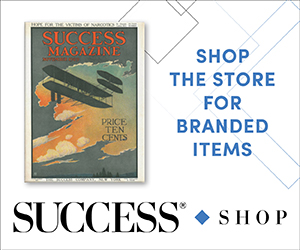“All press is good press,” goes the adage. Maybe. But not all press leads to sales.
Just ask colleagues about their public relations efforts. Landing a solid media mention usually requires hiring an expensive professional agency, or investing considerable time and efforts in-house. And entrepreneurs are often surprised to find that there’s no direct correlation between media coverage and profit.
“Being in top media—like the New York Times or Wall Street Journal—is not as powerful as being in media your target audience consumes,” says Peter Shankman, the founder of Help A Reporter Out, the leading platform for connecting journalists and sources, and the principal of The Geek Factory, a boutique marketing and PR agency.
The key is to identify who your target audience is and what they read or watch. Shankman recalls a software client that threw lavish cigar-themed parties each year. Shankman helped land the company a mention in Cigar Aficionado magazine, which is read by many influential CEOs, some of whom called the software client inquiring about new business.
Big Story, Small Publication
While Cigar Aficionado has mainstream appeal, it is often small, niche trade publications that provide the biggest opportunities for small businesses, says Selena Soo, a publicity strategist for entrepreneurs, experts, authors and coaches. “Niche publications are very passionate about their topics and are more likely to take action” on media inquiries from smaller businesses, Soo says.
Consider oVertone Haircare, a maker of conditioners that does 100 percent of its own PR, mostly working with blogs. The company recently had placements at a huge parenting blog and a small niche blog. While the large general-audience site did generate lots of traffic, it netted few sales. Meanwhile the smaller blog with the just-right demographic helped grow weekly sales by more than 250 percent.
Consider the Medium
Do not assume that major coverage like a Good Morning America appearance will automatically have new customers flooding your website. That is because it is unlikely that audiences will hear about a product or service through a single medium, such as a morning TV show, and then turn on their laptop, search out your website and make a purchase. One of Shankman’s clients made software that allowed airline travelers to choose their seats. He landed the company a coveted spot on the cover of an inflight magazine, but sales did not improve. “After people read about the product, they did not remember to go home and download it,” Shankman says.
While legacy media brands that you have known for a lifetime hold a lot of prestige, do not underestimate the value of online publications. A link in a web story can lead readers directly to an online vendor or your homepage. After all, U.S. Census statistics find that e-commerce sales are growing at a rate more than triple that of retail sales overall.
Even after you secure a placement in a mainstream glossy magazine with millions of readers, it can take months or even years to come to fruition, whereas the news cycle for online media can be mere hours.
Connecting with Media
• Follow reporters and editors who cover your industry. Good sources for this info include Twitter, LinkedIn and MediaBistro’s Mastheads.
• Do not be shy about interacting with these professionals, all of whom want to be the first to spot a trend or amazing new product.
• Do not expect a feature story about you. “Most news is about trends. A story needs to be relevant and timely,” Soo says. “Make yourself available as someone who provides useful information instead of pushing your own agenda.”
Lauren Witte
Associate Director of Marketing and Client Services
Business: Jackson White Attorneys at Law in Mesa, Ariz.
Strategy: Offer free advice to the largest target audience possible.
Results: Publicity efforts have resulted in new leads and clients, plus a healthy boost in brand awareness.
In 2010 we arranged a weekly column with our local newspaper, The Arizona Republic. Originally focused on real estate questions, the column is now called “Aging and the Law.” But the format is the same; readers write in with questions and our attorneys answer them.
Each week our firm receives between 10 and 20 questions related to elder law, and our attorneys pick one to field in the Saturday paper. Recent topics include veterans’ benefits, the Affordable Care Act and eligibility for the state’s long-term care program.
In the first eight months of 2014, we tracked 10 consultations that originated from column readers, with eight of those consultations becoming clients. This generated between $50,000 and $100,000 in fees.
The column—for which the firm isn’t compensated—benefits Jackson White in other ways. For one, we keep a binder full of the columns in our lobby, lending credibility to the firm anytime someone leafs through it. The content is also repurposed on our website in the form of blog posts and again in our weekly email newsletter. It gives us a measure of prestige, too. Partners have attended events where other attendees pulled a clipping of the column out of their pockets and say they saw the lawyer in the paper. It positions our attorneys and the firm as experts in the community.
As for marketing, this is a very efficient way to connect with potential clients. Because the column is based on real reader questions, we can better understand and address our target market’s deepest concerns. There is no guessing. In fact, The Republic asked us to refocus from real estate to elder law topics based on the newspaper’s metrics. The area’s demographics along with the traffic the column was driving let us know what to focus on.
Lori Cheek
Founder
Business: Cheek’d, a dating service run from New York. Members give out cards to people who catch their eye, prompting the receiver to check out the member’s online profile.
Strategy: Personally chase coverage in multiple media outlets with tenacity.
Results: The first media hit generated five figures in sales and jump-started the company.
Since we started in 2010, we’ve been featured all over the place: Forbes, The Washington Post, Fox, you name it. We’re a startup, and when we launched I didn’t have a budget for a PR team. I did all our PR myself. I got 20 black envelopes and placed a black Cheek’d card inside with a note—“This card will change your life”—along with a code to learn more information about the business. I addressed the cards to 20 editors and reporters at top national publications that I thought might cover us. It cost me a grand total of $12.50.
The first media hit was a New York Times feature about us by Stephanie Rosenbloom. The story went online at 10 p.m., and the boom in traffic crashed our server that very night. The one mention was worth $30,000.
The second biggest sales spike came after coverage on the technology site TechCrunch. We attended NY TechDay, an annual event for startups, and set up a booth in hopes of attracting investors. TechCrunch became interested and chose us out of the huge crowd of exhibitors, 160 startups, for a profile. That turned out to be a huge sales day in part because TechCrunch followers are heavy Twitter users, so the story blew up on social media, giving us an even bigger reach.
A couple of years ago we launched Cheek’d cards aimed at Wall Street bankers, inscribed with funny lines such as “Make me part of your portfolio.” I attended a media networking event and scanned everyone’s name tag until I spotted a Wall Street Journal reporter. There were half a dozen guys in front of me wanting to talk to her, but I waited patiently until I got her attention and promised an exclusive story. The Journal did a video story about us, which didn’t drive a lot of sales, but at least I can include Wall Street Journal in my bio. Plus, the more the media see that other media have written about you, the more likely they are to cover you.
Sometimes even bad publicity is good publicity. Our third-largest sales day was in March, when I was on Shark Tank. Basically the sharks told me to go find a hole and die. But we got about 100,000 unique visitors to our site, and it crashed again.
Jon Cyr
Founder and CEO
Business: Sir Lancelot’s Armor, maker of bulletproof glass screen protectors for smartphones and tablets
Strategy: Hire a PR agency to pitch to a variety of media outlets in a burst.
Results: Sir Lancelot’s experienced a 110 percent sales increase in a single month.
We sell most of our products online, and a while back everyone was telling us to invest in search engine optimization (SEO). I did, but wasn’t impressed with the results. It made sense to me that positive public relations equated to a natural way of building SEO. But SEO firms are not usually good at PR. So I took money out of the SEO budget and invested it with a New Jersey PR firm. When we started out together, I made it clear I wanted measurable results.
The PR firm helped us focus our attention on what would get press: the fact that our laminated tempered glass can stop bullets. OK, it won’t stop high-powered rifle bullets, but it will stop rounds from a BB gun. The firm focused on that buzzword and pitched a TV news story in which my phone was shot with a gun. We set up a whole nationwide media campaign, and the first hit happened to be a 6 p.m. segment on the NBC affiliate in Seattle, where we are based. Even though we sell nationally, there was a 15-fold spike in Seattle-area sales when the story hit. That got the ball rolling.
In the two weeks after the campaign rollout, more than 100 media outlets picked us up, including huge mainstream and tech brands such as Gizmodo, the Los Angeles Times and Houston Chronicle. Month-over-month sales increased 110 percent, yielding a sizable return on our PR investment. We were able to leverage the original NBC shooting range segment to other markets, promising an exclusive story in each area.
Because we have such a mainstream product, we have found great returns on many types of media. The big tech blogs are powerful because they are widely read, but smaller motherhood and fashion blogs, where readers are not as aware of the latest gadgets, have resulted in good sales, too, because we stand out.





